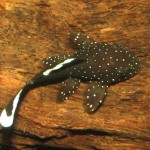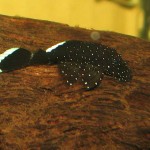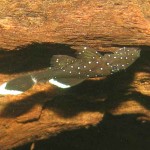Since my well water here in Ohio is too hard to economically make RO, I use lots of rain water in the fish room. As over an 1.5 inch of rain has fallen in the last 36 hours, I couldn’t be happier, and neither could the fish for that matter! Continue reading Rain, rain and more rain…..
Clearing out the fish room
Well it looks like hot weather is just around the corner. I’ve got just a few more CPD’s going out and I’ll be done shipping fish until the weather cools off next fall. While it might not be immediately apparent, there is a method to my madness!

Over the years when I’ve lost fish while shipping it’s always been due to the fish being exposed to the heat. One way to combat that would be to ship everything over-night, but who wants to pay those exorbitant shipping charges! Since I ship everything USPS Priority, my solution is to simply take a break when the weather get too hot.
This system has worked out very well for me. I basically have two shipping seasons and two spawning seasons. In a way, it helps to keep the hobby fun and prevents it from becoming too much like a job.
L183’s – a BAP score!
WOW! I am on a roll! At our last club meeting I scored some fantastic L183 plecos at the BAP auction after the club meeting. After getting the Zebras at the Swap Meet, this is just icing on the cake.
These fish prefer “Black Water” conditions to spawn, but another club member is keeping them in regular Columbus tap water with great success. They are just babies at around 1.5 inch long, so it will be a bit before any hopes of spawning these fish.
Spawning Otocinclus catfish
Back around the first of the year Petsmart was having a sale on Otocinclus for $1 each. Each spring for the past couple of years I’ve wanted to try spawning these fish so I picked up a couple bags for a later project.

They have been eating lots of Repashy “Soilent Green” and fattened up very nicely.
The spawning set-up is a standard 10 gallon tank with some anubias and crypts. It has a course black substrate and the water is very soft being almost pure rain water. I have a small heater set to keep the temperature at 78 °F.

The fish must be happy because today while doing water changes I found the first fry!
If I can get these fry to adult hood it will be interesting to see if tank raised Otos are a bit more hardy than the store bought variety.
Here are some photos of the fry just a couple of days later…..


2013 C.A.F.E. Swap Meet
Last Saturday was our local club’s annual swap meet and silent auction. To say I had a great time would be an under statement.

First off, I got to see all the local fish heads after a rather long winter. Second, I sold tons of fish and inverts. And last, but not least, I won some super nice L046 Zebra plecos in the silent auction!
The Zebra’s, (4 in total), were a BAP submission by club President Jeremy Basch.
This years swap was at the new location in the Marriott Courtyard Columbus West. It’s an easy spot to get to and we had a great turn-out!
If you are not involved with your local club, you are missing out. It seems like every event my club has is better than the last.



